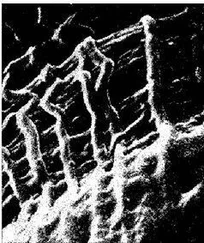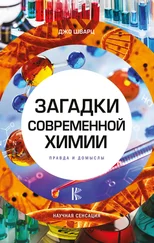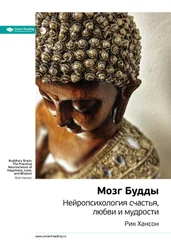F. Cavazzuti, A. Salsi, P. Calogero, E. Parma, M. Stramba-Badiale, S. Vitali, G. Andreoni, M. R. Inzoli, G. Santus, R. Caregnato, M. Peruzza, M. Favaretto, C. Bozeglav, M. Alberoni, D. de Leo, L. Serraiotto, A. Baiocchi, S. Scoccia, P. Culotta and
D. Ieracitano. 1991. Long-term acetyl-L-carnitine treatment in Alzheimer’sdisease. Neurology 41:1726.
Spear, L. P., 2000. The adolescent brain and age-related behavioral manifestations. Neuroscience Biobehavior Review 24:417–463.
Stern, D. 2000. The Interpersonal World of the Infant. New York: Basic Books.
Su, K., S. Huang, C. Chiub and W. Shenc. 2003. Omega-3 fatty acids in major depressive disorder: A preliminary double-blind, placebo-controlled trial. European Neuropsychopharmacology 13:267–271.
Sumedho, A. 2006. Trust in awareness. Talk given at Chithurst Monastery, Chithurst, UK, February 25.
Sun, Q. Q., S. S. Xu, J. L. Pan, H. M. Guo and W. Q. Cao. 1999. Huperzine-A capsules enhance memory and learning performancein 34 pairs of matched adolescent students. Zhongguoyao li xue bao [ Acta Pharmacologica Sinica ] 20:601–603.
Takahashi, H., M. Kato, M. Matsuura, D. Mobbs, T. Suhara and Y. Okubo. 2009. When your gain is my pain and your pain ismy gain: Neural correlates of envy and schadenfreude. Science 323:937–939.
Tanaka, J., Y. Horiike, M. Matsuzaki, T. Miyazka, G. Ellis-David and H. Kasai. 2008. Protein synthesis and neurotrophin-dependent structural plasticity of single dendritic spines. Science 319:1683–1687.
Tang, Y., Y. Ma, J. Wang, Y. Fan, S. Feg, Q. Lu, Q. Yu, D. Sui,
M. Rothbart, M. Fan and M. Posner. 2007. Short-term meditation training improves attention and self-regulation. Proceedings of the National Academy of Sciences 104:17152–17156.
Taylor, S. E., L. C. Klein, B. P. Lewis, T. L. Gruenewald, R. A. R. Gurung and J. A. Updegraff. 2000. Biobehavioral responsesto stress in females: Tend-and-befriend, not fight-or-flight. Psychological Review 107:411–429.
Thera, N. 1993. The four sublime states: Contemplations on love, compassion, sympathetic joy and equanimity. Retrieved fromhttp://www.accesstoinsight.org/lib/authors/nyanaponika/wheel006.html on April 3, 2009.
Thompson, E. 2007. Mind in Life: Biology, Phenomenology and the Sciences of Mind . Cambridge, MA: Harvard University Press.
Thompson, E. and F. J. Varela. 2001. Radical embodiment: Neural dynamics and consciousness. Trends in Cognitive Sciences 5:418–425.
Tucker, D. M., D. Derryberry and P. Luu. 2000. Anatomy and physiology of human emotion: Vertical integration of brain stem, limbic and cortical systems. In Handbook of the Neuropsychology of Emotion , edited by J. Borod. London: Oxford University Press.
Vaish, A., T. Grossmann and A. Woodward. 2008. Not all emotion sare created equal: The negativity bias in social-emotional development. Psychological Bulletin 134:383–403.
Vaitl, D., J. Gruzelier, G. Jamieson, D. Lehmann, U. Ott, G. Sammer,
U. Strehl, N. Birbaumer, B. Kotchoubey, A. Kubler, W. Miltner,
P. Putz, I. Strauch, J. Wackermann and T. Weiss. 2005. Psychobiology of altered states of consciousness. Psychological Bulletin 133:149–182.
Vogiatzoglou, A., H. Refsum, C. Johnston, S. M. Smith, K. M. Bradley, C. de Jager, M. M. Budge and A. D. Smith, 2008. Vitamin B12 status and rate of brain volume loss in community-dwellingelderly. Neurology 71:826–832.
Walsh, R. and S. L. Shapiro. 2006. The meeting of meditative discipline sand Western psychology: A mutually enriching dialogue. American Psychologist 61:227–239.
Wilson, E. O. 1999. Consilience: The Unity of Knowledge . London: Random House/Vintage Books.
Wolf, J. L. 1995. Bowel function. In Primary Care of Women , edited by K. J. Carlson and S. A. Eisenstat. St. Louis, MO: Mosby-Year Book, Inc.
Wu, W., A. M. Brickman, J. Luchsinger, P. Ferrazzano, P. Pichiule, M. Yoshita, T. Brown, C. DeCarli, C. A. Barnes, R. Mayeux,
S. Vannucci and S. A. Small. 2008. The brain in the age of old: The hippocampal formation is targeted differentially by diseases of late life. Annals of Neurology 64:698–706.
Yamasaki, H., K. La Bar and G. McCarthy. 2002. Dissociable prefrontal brain systems for attention and emotion. Proceedings of the National Academy of Sciences 99:11447–11451.
Yang, E., D. Zald and R. Blake. 2007. Fearful expressions gain preferential access to awareness during continuous flash suppression. Emotion 7:882–886.
Young, L. and Z. Wang. 2004. The neurobiology of pair bonding. Nature Neuroscience 7:1048–1054.
Zelazo, P. D., H. H. Gao and R. Todd. 2003. The development of consciousness. In The Cambridge Handbook of Consciousness , edited by P. D. Zelazo, M. Moscovitch and E. Thompson. New York: Cambridge University Press.
Аллергия 285
Алчность 30, 73, 127
Ацетилхолин 57, 291
Бдительность 62, 205, 229
Безмятежность 152, 209,
261 Благодать 252
Блаженство (блаженное чувство) 246
Вазопрессин 58, 163
Вариабельность сердечного ритма (ВСР) 109
Вегетативная нервная система 83, 104, 125
Витамин B 6 289
Витамин E (см. Токоферолы ) 287
Внимания индивидуальные особенности; 225
направленность; 239 удержание 239
Внимания сосредоточение на дыхании; 114
на своем теле 108
Внутренний словесный поток (внутренняя речь, рассуждение, комментарий; см. еще Планирование ) 109
Вожделение (желание обладать чем-то, см. еще: Алчность ) 41, 141
Гамма-аминомасляная кислота (ГАМК) 57
Гамма-волны (мозга) 28, 248
Гештальт (неделимый единый образ)231
Гиппокамп 20, 55, 56, 75, 78, 285
Глубокий выдох 107
Глютамат 57
Гомоцистеин 286
Диафрагмальное дыхание 106
Добродетель 30, 68, 168, 184
Добродетельная твердость 174
Дофамин 36, 57, 93, 128, 222, 290
Дхъяна (состояние высшей сосредоточенности в буддизме)238
Исконное переживание своего существования (бытия) 246
Истинное «я» (истинная сущность) 33, 86
Концентрация, фокус (см. Сосредоточенность ) 33, 108, 200, 239
Кортизол 58, 75, 112
Лимбическая система 26, 52, 77
Личностно значимый, значимый (об информации, событии) 264
Личность 47, 118, 174, 213,263
Медитация 14, 28, 31, 111, 200, 238, 250
Метилирование 286
Миелинизация 161
Миндалевидное тело 55, 74,
128, 132 Мозолистое тело 77
Читать дальше
Конец ознакомительного отрывка
Купить книгу












